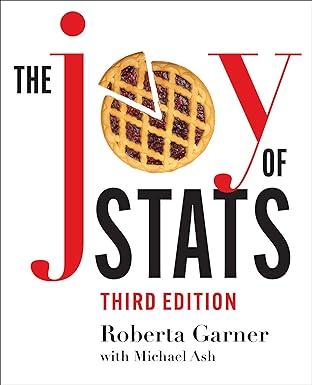Ask 20 of your friends a yes/no binary type of question and record their answers. This distribution
Question:
Ask 20 of your friends a yes/no binary type of question and record their answers. This distribution will be considered the population, and its percentage of “yes” answers will be considered the population parameter, in this case a proportion. Next, group your friends – on paper! – into a large number of samples of ten people. Use the data in your original survey to identify the percentage of “yes” answers for each of the samples you have created on paper. Record the percentage of “yes” answers for each sample. You will see that the proportions of “yes” answers in the 10-person samples will not be identical to each other and may differ from the overall proportion among the 20 people in the population – unless every single one of your 20 friends answered the same way. If you compare your results in this experiment with those carried out by classmates or friends, you may discover that the closer the population percent of “yes” answers was to 50%, the more variability in the sample results. In this case, the population parameter is a proportion, not a mean, but for both means and proportions, there is variability in the sample outcomes.
Step by Step Answer:

The Joy Of Stats A Short Guide To Introductory Statistics In The Social Sciences
ISBN: 9781487527297
3rd Edition
Authors: Roberta Garner, Michael Ash





